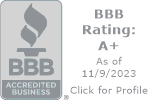Mouse Removal in Calgary AB
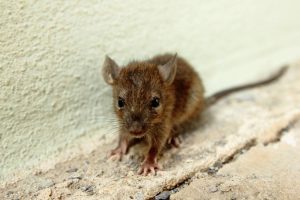 House mice have an adult body length (nose to base of tail) of 7.5–10 cm (3.0–3.9 in) and a tail length of 5–10 cm (2.0–3.9 in). The weight is typically 40–45 g (1.4–1.6 oz). They live in a wide variety of hidden places near food sources and construct nests from various soft materials. Mice are territorial, and one dominant male usually lives together with several females and young.
House mice have an adult body length (nose to base of tail) of 7.5–10 cm (3.0–3.9 in) and a tail length of 5–10 cm (2.0–3.9 in). The weight is typically 40–45 g (1.4–1.6 oz). They live in a wide variety of hidden places near food sources and construct nests from various soft materials. Mice are territorial, and one dominant male usually lives together with several females and young.
Commensal mice populations often have an excessive food source resulting in high population densities and small home ranges in Calgary, AB. The gestation period is about 19–21 days, and they give birth to a litter of 3–14 young (average six to eight). One female can have 5 to 10 litters per year, so the mouse population can increase very quickly. Breeding occurs throughout the year.
Our Mouse Control Procedure in Calgary
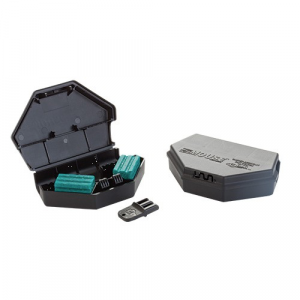 When we arrive, our Calgary mouse exterminators will carry out a full inspection of your property. A detailed report on any evidence of pests we find will be created and we will plan our control program accordingly. The technician will work inside by placing tamper resistant, locked rodent bait stations in strategic locations throughout the interior of the home. We will ensure the placement of the stations is safe for everybody in the home, will not give off fumes, and will not be readily accessible by children and pets.
When we arrive, our Calgary mouse exterminators will carry out a full inspection of your property. A detailed report on any evidence of pests we find will be created and we will plan our control program accordingly. The technician will work inside by placing tamper resistant, locked rodent bait stations in strategic locations throughout the interior of the home. We will ensure the placement of the stations is safe for everybody in the home, will not give off fumes, and will not be readily accessible by children and pets.
Typically, we install 8-12 stations in locations such as under the kitchen sink, under the stove, laundry room, furnace room, and ceilings voids. This will eliminate all the mice in your house.
Moving to the exterior of the property, the technician will install rodent control stations in the garage and shed. We will install one complimentary exterior rodent bait station, a value of $39.50. Alternatively, you can also upgrade to a realistic rock landscape bait station. 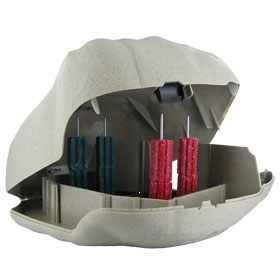 The exterior station(s), will control the mice outside, so they do not make it into your house.
The exterior station(s), will control the mice outside, so they do not make it into your house.
We will also complete an exterior inspection, which is crucial in getting control of your mouse concerns. The mice exterminator will inspect the exterior of your property very closely and fix any possible rodent entryways. Most common entryways for mice are through the garage into the house, around the utilities (TV and cable boxes), gas and water pipe holes, and of course an open door. The Calgary technician will also share some tips for keeping your property protected, such as keeping piled wood away from the home. 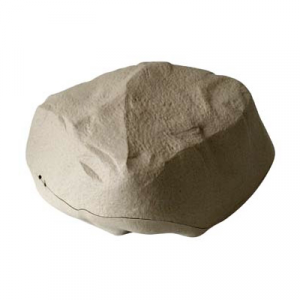
All the work our Calgary mouse exterminator will complete and the deficiencies we find that are crucial to achieving full control of your property are noted in our service report. The service report and invoice are directly e-mailed to you from the technician prior to leaving the property.
To learn more about our Calgary mouse exterminator services or book your appointment, call (403) 238-7400 today!
Frequently Asked Questions About House Mice From Calgary Residents
The house mouse (Mus musculus) is a small rodent, a mouse, one of the most numerous species of the genus Mus. Like a wild animal, the house mouse mainly lives associated with humans, causing damage to crops and stored food. The house mouse has been domesticated as the pet or fancy mouse, and as the laboratory mouse which is one of the most important model organisms in biology and medicine. It is by far the most commonly used genetically altered laboratory mammal.
There is no way of placing a monetary value on human suffering and damage caused by mice. The greatest loss is probably not what mice eat, but what is wasted and contaminated.
Identification
The house mouse is a delicate, agile, little rodent. It has a slightly pointed nose; relatively small feet; small, black, somewhat protruding eyes; large, sparsely-haired ears; and a nearly hairless tail about as long as its body, with obvious scale rings. They vary in color but are generally grayish-brown throughout with a gray or buff belly. Adults weigh 10-30 g (2/5 to one oz.) and measure 65 to 90 mm (2 1/2 to 3 3/4 in.) in total body length, including the tail.
The house mouse is not native to North America. It originated from Asia, arriving and traveling across North America with settlers from Europe and elsewhere. A very adaptive species, the house mouse depends upon man for shelter and food, particularly in cooler climates, and this close association with humans classifies it as a “commensal rodent” (like the Norway rat).
In six months, one pair of mice can eat more than two kilograms (4 lbs.) of food and deposit about 18,000 droppings. Food contaminated by mice is about ten times greater than what is eaten. Also, food wasted by mouse nibbling is much more than what is eaten. So common are mice, that it is no wonder their hairs and sometimes droppings, end up in all types of food commodities, from canned beans to loaves of bread. Structural damage caused by rodents can be expensive. In recent years the trend toward the use of insulated confinement facilities to raise swine and poultry, for instance, has led to increased rodent damage. Mice are very destructive to rigid foam, fiberglass batt and other types of insulation in walls and attics of such structures.
Mice also gnaw wooden structures causing grain and feed to be wasted. They also undermine buildings by burrowing, which eventually causes structural failure and collapse. Electrical wiring gnawed by mice causes many fires each year, listed as “cause unknown”.
Public Health Impact
Mice and their parasites are implicated in the transmission of a number of diseases including salmonellosis, rickettsialpox, and most recently hantavirus. Bacterial food poisoning occurs when foods are contaminated with infected rodent droppings. Mice also carry many types of tapeworms and roundworms, infectious to pets and humans. Hantavirus pulmonary syndrome (HPS), which causes severe illness and even death in humans, is transmitted by several mouse species including the white-footed mouse.
To reduce the risk of contacting organisms transmitted by mice, you should practice these common-sense precautions:
- Eliminate mice from residential areas by removing food sources and access to mice.
- Clean up mouse-contaminated areas by using wet methods, including disinfectants such as bleach.
- Handle mice and other rodents with gloved hands.
- Avoid sweeping and vacuuming when possible, or wear a dust mask to reduce exposure to fine dust particles. Campers should avoid obviously infested areas.
- In high risk, areas where high efficiency, a particulate respirator (i.e. 3M model 9970).
- Discourage children from playing with or trapping mice and should not keep wild mice as pets for “science projects”
- De-worm household and farmyard pets regularly.
Residential Mouse Extermination Information. What APC Calgary will do for you:
- Absolute Pest Control will place tamper resistant, locked bait stations in strategic locations in your house. This will eliminate all the mice in your house, and it is safe for everybody including your pet.
- We will do the same thing on the exterior of your house, like the garage, shed, under decks and porch, etc.
- We will complete a visual inspection on the exterior of your house and fix any possible rodent entryways for you. We will advise you of any structural deficiencies that may be too big for our rodent control team.
- Absolute Rodent Control will answer any questions you may have about the process.
- We will return in 30 days to complete the follow-up service, which is included in the price. The follow-up is to ensure your house is now rodent free. We will inspect all areas and service all the bait stations. The bait stations now will be located to serve a preventive rodent control function.
- Our mouse exterminators guarantee to eliminate the mice in your house. The guarantee will be for four (4) month after the follow-up rodent control service.
What you have to do:
- You don’t have to do anything to the bait stations. The best thing is to leave them where the rodent control technician placed them.
- You need to be aware that dogs really like this rodenticide. The mouse exterminator will place the stations where it is not accessible for your children or your pet. If you move a station make certain it will not be accessible to your child or pet. If you do have a pet we recommend that the pet food dish is empty during the night and that the pet food is stored in a plastic container that can be sealed. Pet Food is a favored food source for mice. The same should be done to Bird Seed and your household garbage.
- Try not to store building material and firewood right against your home.
Frequently Asked Questions About Deer Mice in Calgary For Our Mouse Control Team
The white-footed mouse or deer mouse is a native species with white feet, white or light-colored undersides, and brownish upper surfaces. The tail is distinctly bi-colored; the upper portions brown or gray, the underside white, with a well-defined line where the two colors meet.
White-footed mice are about the same size as, or slightly larger than house mice and, at a distance, may be confused with house mice. The bi-colored tail differentiates one from the other. In comparison to house mice, white-footed mice have larger eyes and ears. They are considered by most people to be more “attractive” than house mice, and they do not have the characteristic mousy or musky odor of house mice.
The white-footed mouse measures 50-90 mm (2 to 3 1/2 in.) in length with an additional 50 to 88 mm (2-2 1/2 in.) tall and weigh up to 90 g (3 oz).
Deer mice breed only in summer. Females of northern populations never have more than 2 litters (of about 5 young). In southern Canada, females produce more, smaller litters; some may become sexually mature in the season of their birth. A few animals are known to have survived 2 winters. Deer mice may destroy stored food and carry a virus (hantavirus) that in 15-50% of cases is deadly to humans. The virus is transmitted from feces and urine of deer mice deposited on food or inhaled as dust. They provide food for carnivorous BIRDS and MAMMALS.
Absolute Pest Control – Mouse Exterminator Calgary AB
(403) 238-7400
